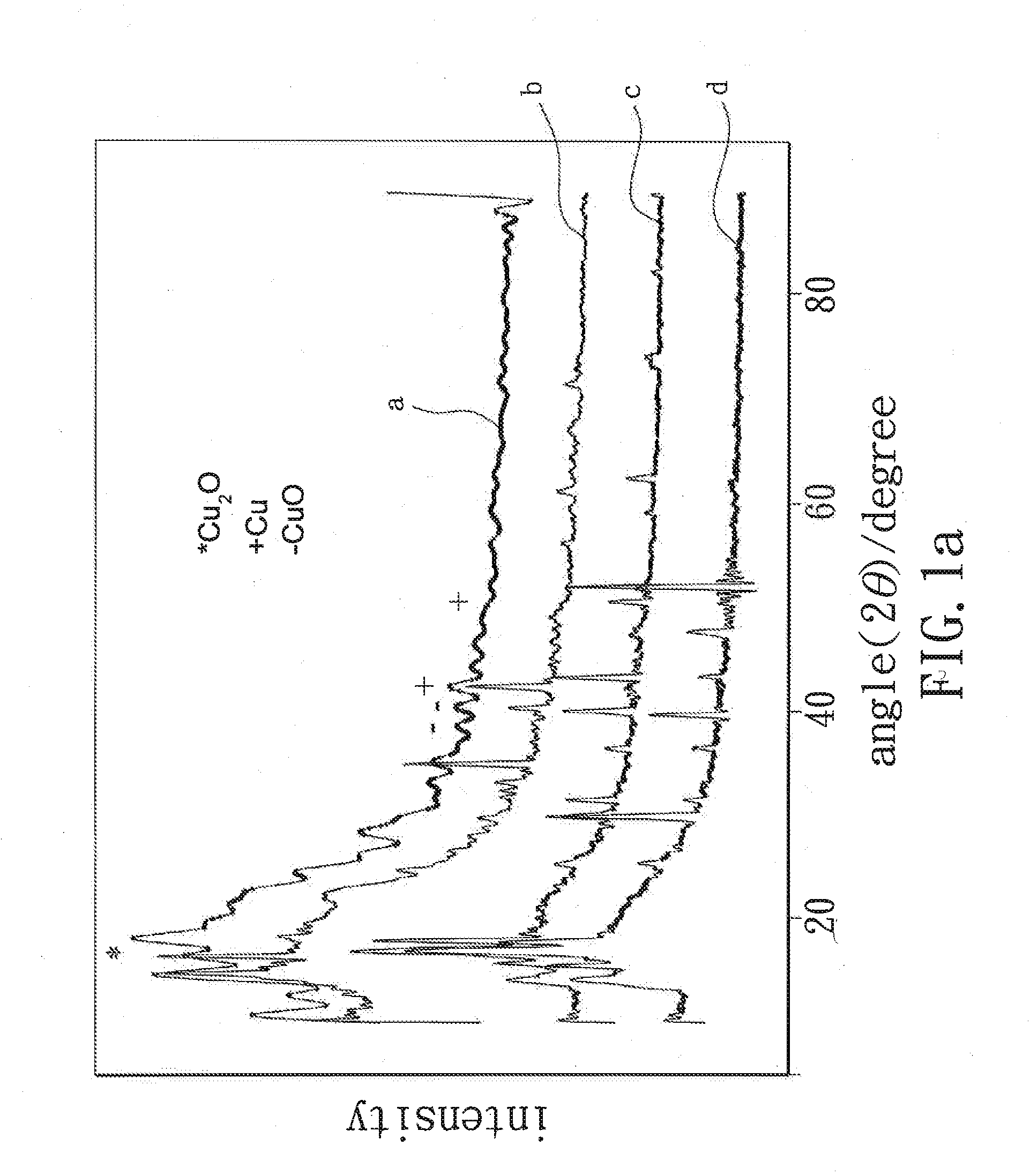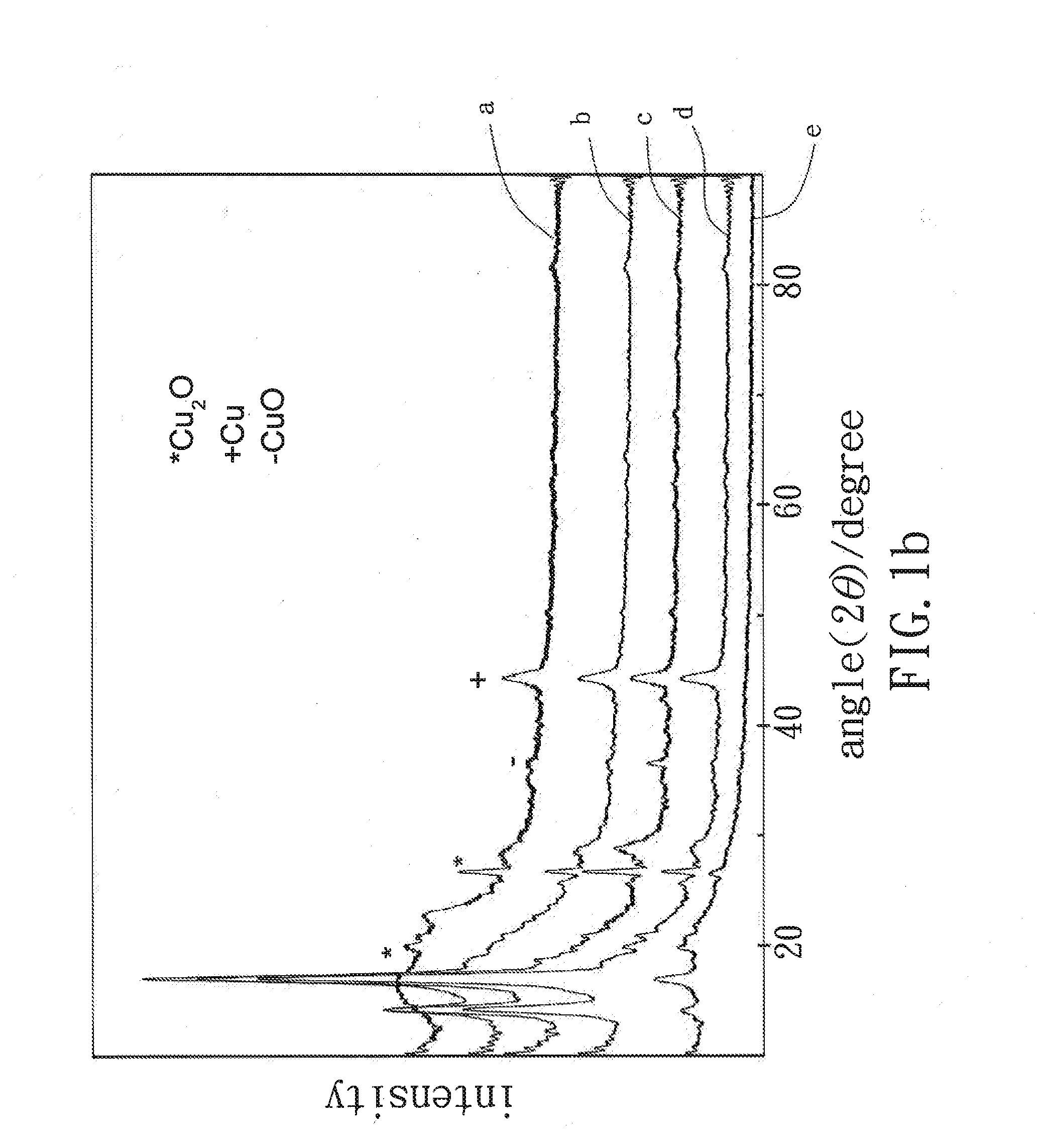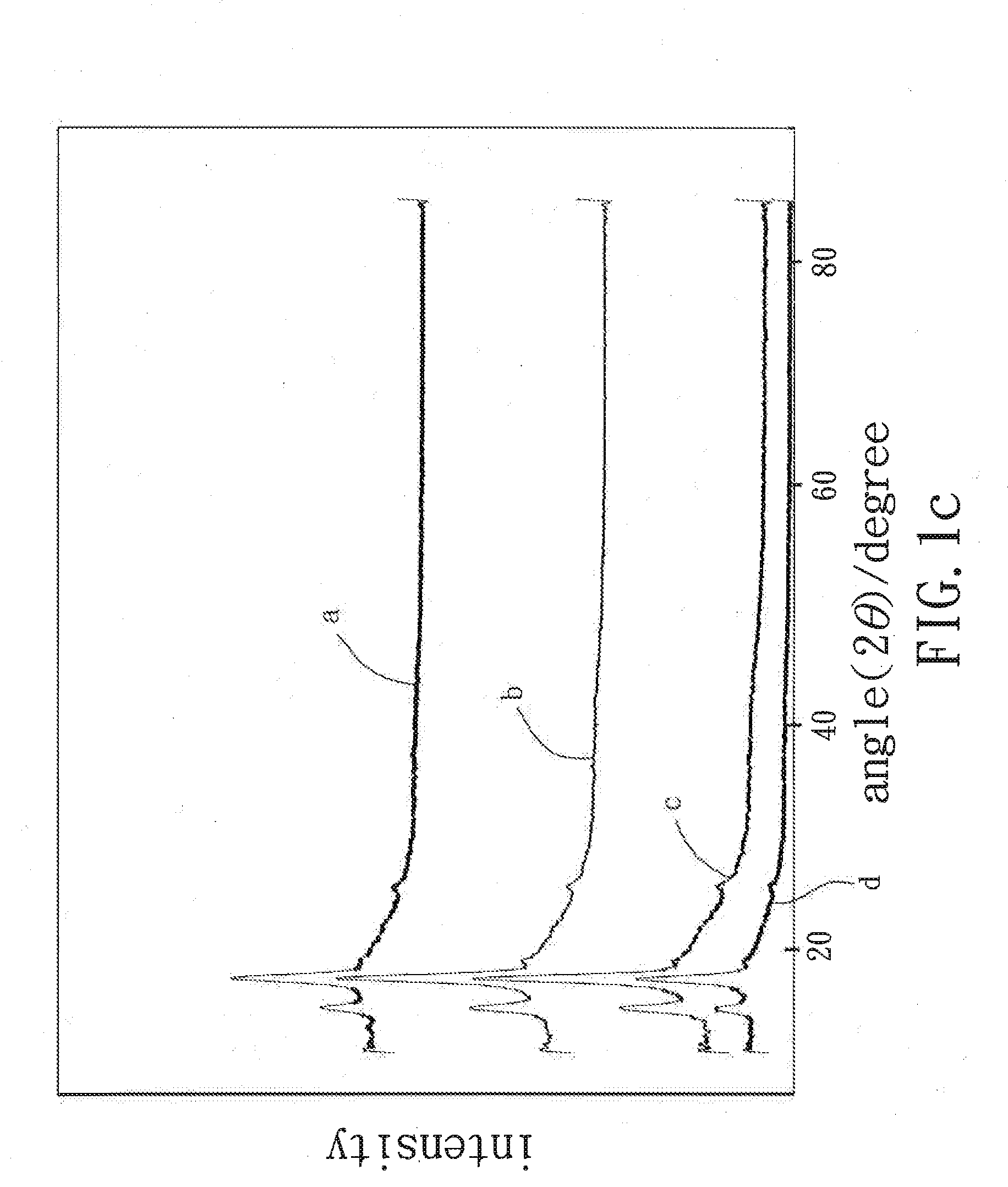Copper-based catalyst for converting ammonia into nitrogen
a catalyst and ammonia technology, applied in the field of copper-based catalysts, can solve the problems of catalysts with higher cost, becoming pollution sources, and becoming pollution sources, and achieve the effect of low activation energy
- Summary
- Abstract
- Description
- Claims
- Application Information
AI Technical Summary
Benefits of technology
Problems solved by technology
Method used
Image
Examples
Embodiment Construction
[0020]An embodiment of a copper-based catalyst for converting ammonia into nitrogen according to preferred teachings of the present invention include porous oxide support and copper compound with low valent. The copper compound with low valent mixes with the porous oxide support by an acid hydrothermal method. The copper compound with low valence is Cu and Cu2O.
[0021]Generally, in the acid hydrothermal method, water is used as a solvent under a high temperature and high pressure environment where the pH value of the environment is smaller than 7.
[0022]In detail, the copper compound with low valence has a valence smaller than 2. The copper compound with low valence, such as copper or cuprous oxide, has lower activation energy Therefore, the copper-based catalyst including the copper compound with low valence and the porous oxide support can be used in a catalysis process, as shown in formula 1, to convert ammonia into nitrogen under lower temperature (especially at 150˜300° C.).
NH315...
PUM
| Property | Measurement | Unit |
|---|---|---|
| temperature | aaaaa | aaaaa |
| size | aaaaa | aaaaa |
| temperature | aaaaa | aaaaa |
Abstract
Description
Claims
Application Information
 Login to view more
Login to view more - R&D Engineer
- R&D Manager
- IP Professional
- Industry Leading Data Capabilities
- Powerful AI technology
- Patent DNA Extraction
Browse by: Latest US Patents, China's latest patents, Technical Efficacy Thesaurus, Application Domain, Technology Topic.
© 2024 PatSnap. All rights reserved.Legal|Privacy policy|Modern Slavery Act Transparency Statement|Sitemap



